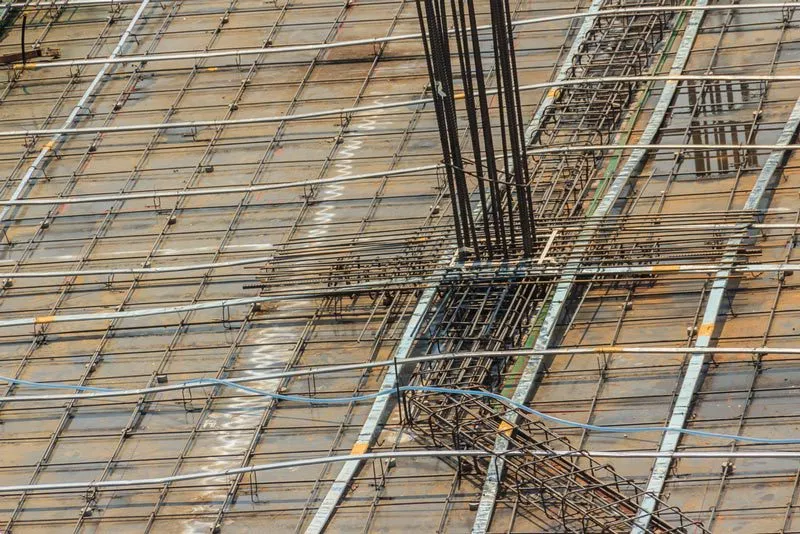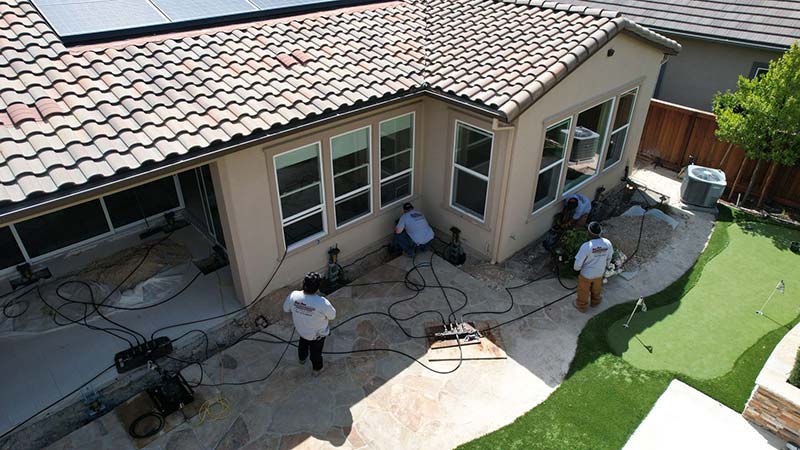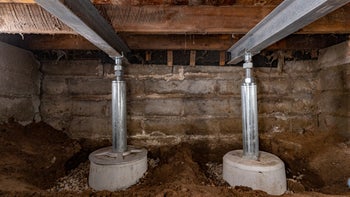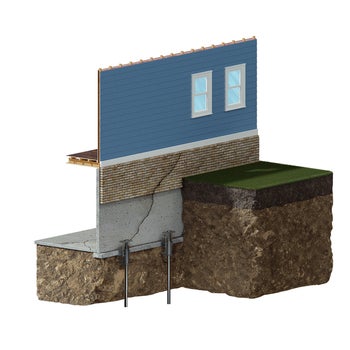Everything You Need to Know About Post-Tension Slabs
Table of Contents
1. What Are Post-Tension Slabs?
2. Why Use Post-Tension Slabs?
3. How Post-Tensioning Works
4. Benefits Of Post-Tension Slabs
5. How To Know If Your House Has Post-Tension Slabs
There are several different ways to build a house and its foundation, including using post-tension slabs.
If you’re looking for information about post-tension slabs, this article covers the basics, including what post-tension slabs are, why they’re used, the benefits of post-tension slabs, and more.
What Are Post-Tension Slabs?
Post-tension slabs are concrete slabs with steel tendons under tension inside them. You can think of these steel tendons as similar to rebar because they strengthen the concrete. Post-tension slabs are used in residential and commercial construction, bridges, parking structures, walls, and more. Post-tension slabs are stamped, so people don’t cut or drill into them.
For more information, see Most Common Types Of House Foundation Systems.
Why Use Post-Tension Slabs?

Post-tension slabs are used because they strengthen the concrete and enable it to be used in ways architecturally that wouldn’t be possible otherwise. For example, post-tension slabs make it possible to use longer spans between supports. Also, because post-tension slabs are thinner, they use less concrete, and that concrete is less likely to crack. Post-tension slabs might also be used for construction in areas with building height restrictions. Because post-tension slabs are thinner, the building will be shorter.
Post-tension slabs are also used when problematic soil cannot adequately support a structure. (For more information, see our page about Foundation Settlement.) Post-tensioning enables the slab to share some of the building’s load along with the foundation and piers. This is cost-effective because it means the footing doesn’t need to be as big. Post-tensioned slabs also don’t need as many control joints for shrinkage cracks.
How Post-Tensioning Works
After the formwork is built and the steel tendons are added, concrete is poured into the formwork around the tendons. (The tendons are encased in plastic ducts, so they don’t come into contact with water in the concrete and rust.)
Once the concrete has cured to a certain point, the tendons are pulled to create tension and then anchored in place.
Any tendons sticking out of one end of the slab are trimmed. Finally, the formwork is removed.
Only trained professionals should install post-tensioning tendons in concrete.
Benefits Of Post-Tension Slabs
The benefits of post-tension slabs include the following:
- Greater architectural design freedom – For example, you can have larger spaces without support columns and thinner slabs.
- Reduce building height if needed for regulations – The thinner post tension slabs reduce the floor-to-floor height, and this reduces the height of the building. The thinner slabs could also allow extra space without increasing the building’s height.
- Dead load reduced – The “dead load” is the weight of the structure itself. It doesn’t include anything that goes into the structure, such as furniture. Thinner post-tension slabs mean less concrete is required, and because of this, you get a lighter structure.
- Lower maintenance costs – Because post-tension slabs are less likely to crack, maintenance costs are lower.

The only real downside to post-tension slabs is that you need skilled workers to install them.
How To Know If Your House Has Post-Tension Slabs
If your house has post-tension slabs, there will probably be something stamped on a concrete floor somewhere warning you not to cut or core the slab. This warning is often in the garage. If you don’t see anything, there might be something on the wall near the door between the garage and the house.
If you don’t see anything in either of those two locations, find out who built the home and contact them. You could also contact your local building department. If they have the plans for the house, they should be able to tell you the location of the post-tension slabs.
Regardless of your foundation type, if you think you’re home might have a foundation problem, contact our team at Bay Area Underpinning to schedule a free inspection and repair estimate. We’ve been repairing foundations in the Bay Area and beyond – from San Jose to Sacramento – since 2005. Homeowners know they can rely on us for thorough inspections and customized repair solutions.
More Resources
Publish Date:
Last Modified Date:

Our Locations
2333 Courage Dr. Suite C
Fairfield, CA 94533
1161 N Fair Oaks Ave
Sunnyvale, CA 94089



